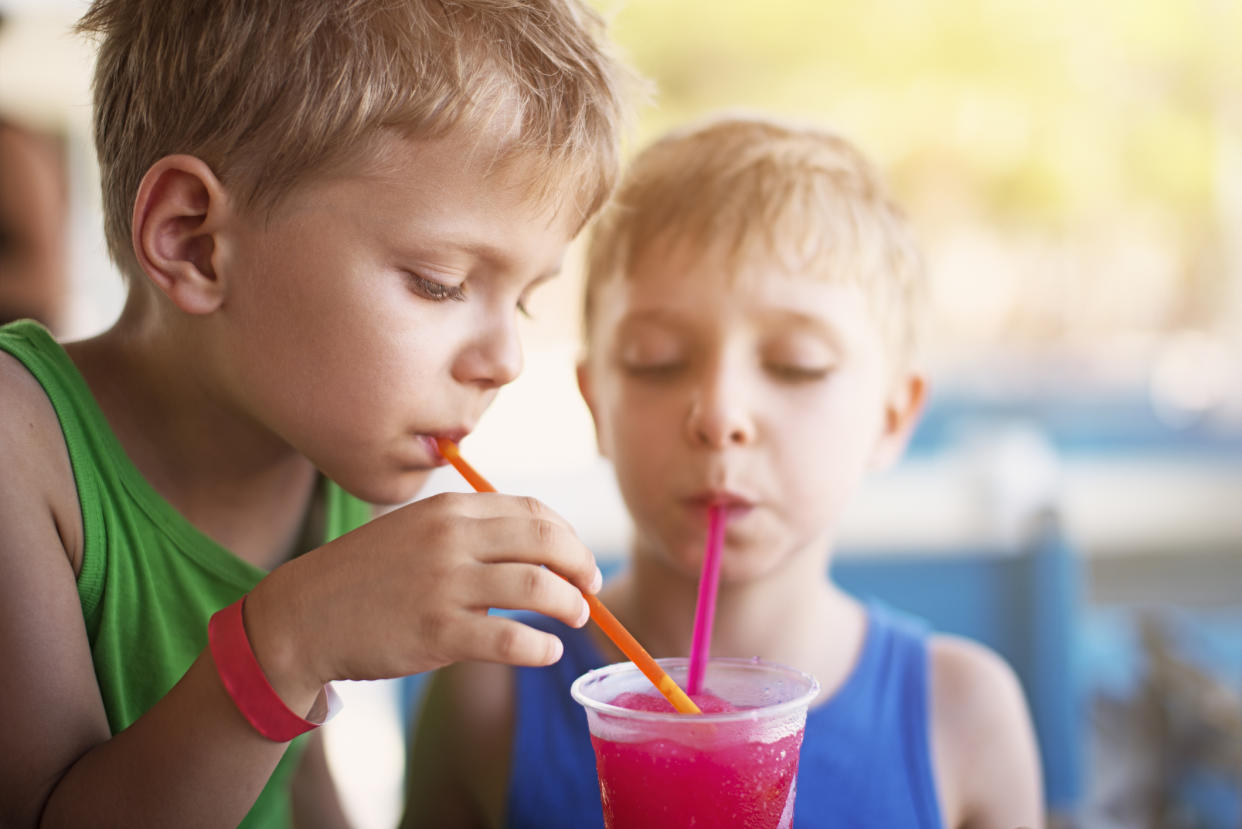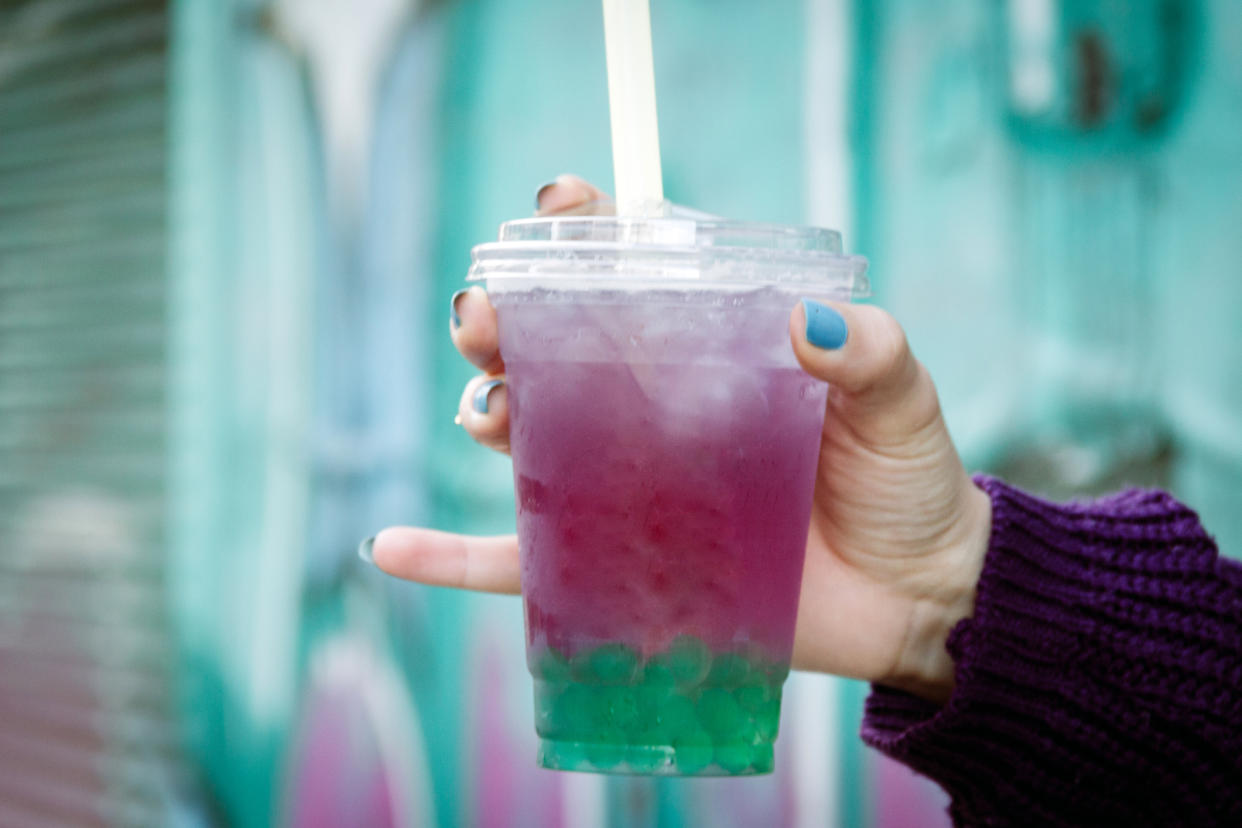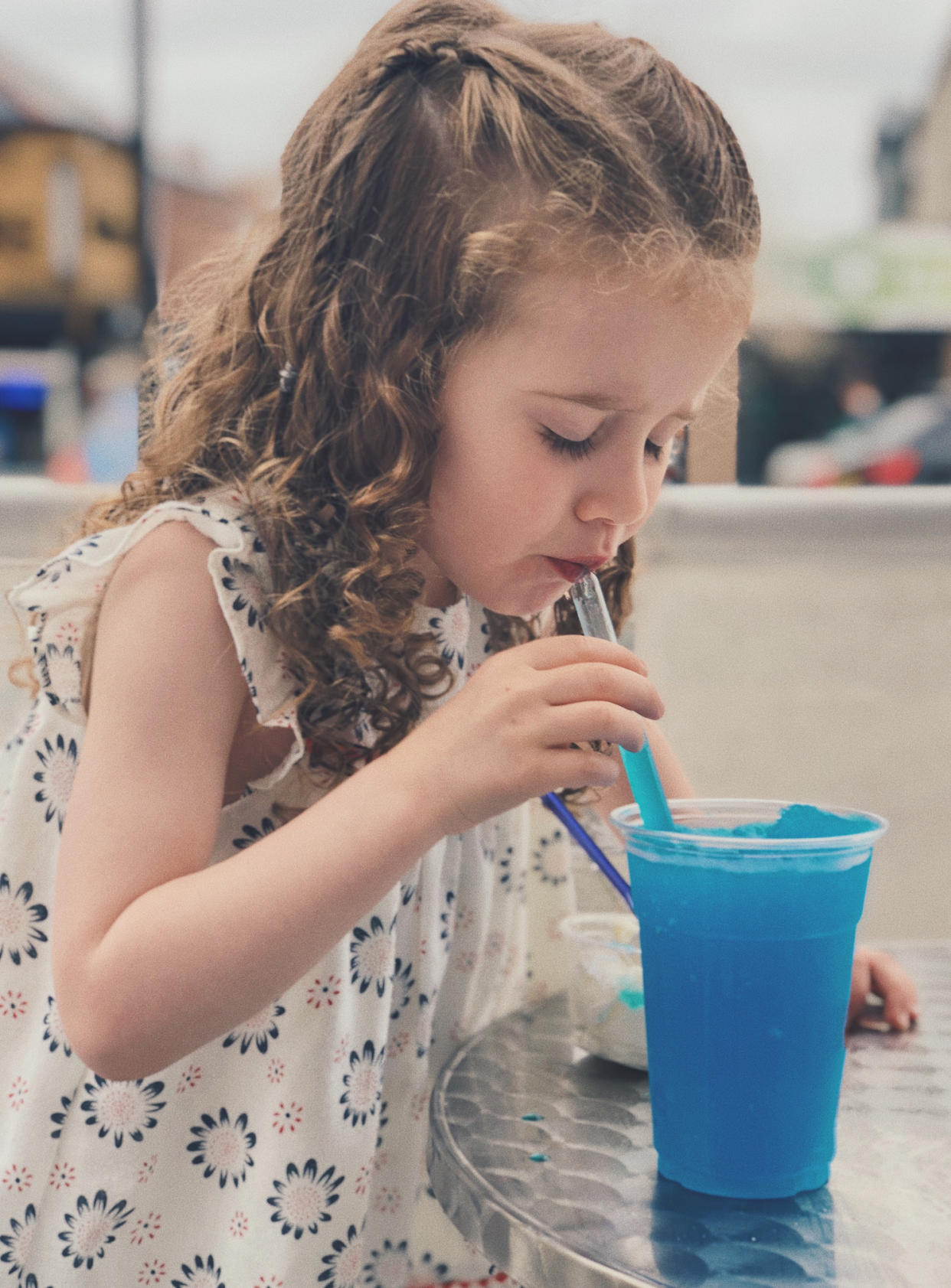Risks of glycerol as children under four warned not to drink slushies

A mum has issued a warning to other parents after revealing her four-year-old son almost died after drinking a slushie drink.
Beth Green said her son Albie was rushed to hospital after having a strawberry-flavoured slush while out bowling with a friend.
"He started hallucinating, scratching himself, biting himself," Albie's mother explained during an interview with Good Morning Britain.
Albie became unresponsive and was rushed to Birmingham Children’s hospital, following the incident in October last year.
The family say doctors believe the episode was likely caused by glycerol intolerance after drinking the slush-ice drink.
It isn't the first time a child has experienced adverse effects following the drinking of a slushie. In January, this year, Scottish mother Victoria Anderson revealed her son Angus, three, became unconscious and was taken to hospital after consuming a similar drink.

"I think slushies should be banned altogether or at the very least there needs to be a warning sign for under-4s. But this could potentially happen to any kid of any age," Ms Anderson told MailOnline.
Last August the Food Standards Agency (FSA) issued new guidance on slush-ice drinks, advising that they should not be sold to children four years of age and under.
Manufacturers are also being advised to tell retailers that they should not offer free refill promotions to under-10s, to prevent young children being exposed to excessive amounts of glycerol.
The updated guidance follows an FSA risk assessment which found that children below this age may suffer from headaches and sickness caused by exposure to glycerol.
It comes after the government body became aware of two cases in Scotland, one in 2021 and one in 2022, where children were also hospitalised because of glycerol intoxication.
What is glycerol in slushies?
Also referred to as E422, glycerol is a key ingredient used to make many slushy drinks. It’s a colourless, odourless liquid used as an additive in the food industry.
Slush ice drinks can contain glycerol as a substitute for sugar to create the slush effect. It acts as a freezing agent to keep the ice from freezing solid and help maintain its slush-like consistency.
While glycerol is found in some other foods, it is added at much lower quantities than in slush ice drinks.

What are the risks of glycerol in children?
According to Dr Deborah Lee from Dr Fox Online Pharmacy glycerol is generally low in toxicity and adults rarely experience side effects, but younger children remain at adverse risk of effects because they struggle to process it because of their lower body weight.
"Mild symptoms of ingestion of glycerol include headaches, dizziness, nausea, vomiting and diarrhoea," explains Dr Lee. "However, the effects of severe glycerol intoxication are similar to alcohol intoxication and can result in low blood sugar and mental confusion."
At very high levels of exposure – typically when several of these products are drunk by a child in a short space of time – glycerol intoxication could cause shock, hypoglycaemia and loss of consciousness.
"While the symptoms of glycerol intoxication are usually mild, it is important that parents are aware of the risks – particularly at high levels of consumption," explains FSA head of additives, Adam Hardgrave.
"It is likely that there is under-reporting of glycerol intoxication, as parents may attribute nausea and headaches to other factors. We are grateful to those manufacturers who have already taken steps to reduce levels of glycerol, and to those who have already told us they will be adopting our new guidelines."
The FSA’s risk assessment considered a worst-case exposure scenario in which a child consumed a 350 ml slush drink containing the highest level of glycerol used (50,000 mg/L) and compared this to a threshold above which adverse effects could occur. Children aged 4 or below would exceed this threshold.
What is the future of glycerol?
After issuing its guidelines last year the FSA says it plans to monitor how widely the guidelines are adopted and could take further action in future.
"Severe effects can occur if a child under four consumes a 350 ml slushie drink containing 50,000 mg/L of glycerol or more," Dr Lee continues. "Slushie manufacturers have been asked to only add the minimum amount of glycerol to their slushie products."
When asked why the governing body aren't considering a flat ban on glycerol the FSA's Professor Robin May said it is important to put the risk into proportion.
"In the UK 50 million slushie drinks are sold per year, but we are only aware of five cases like Albie's over the last three years. So just to reassure parents it is still a very rare side effect," he explained on Good Morning Britain.
"However because it can happen that's why we are asking all businesses to clearly mark their products as not being suitable for four and under. And its very important to make sure people throughout the business chain understand that.".
Children's health: Read more
Why you should reconsider giving kids fruit juice everyday (Yahoo Life UK, 6-min read)
Signs your child is struggling with their mental health (Yahoo Life UK, 7-min read)
How to spot anxiety in your child – and how to help them (Yahoo Life UK, 6-min read)


